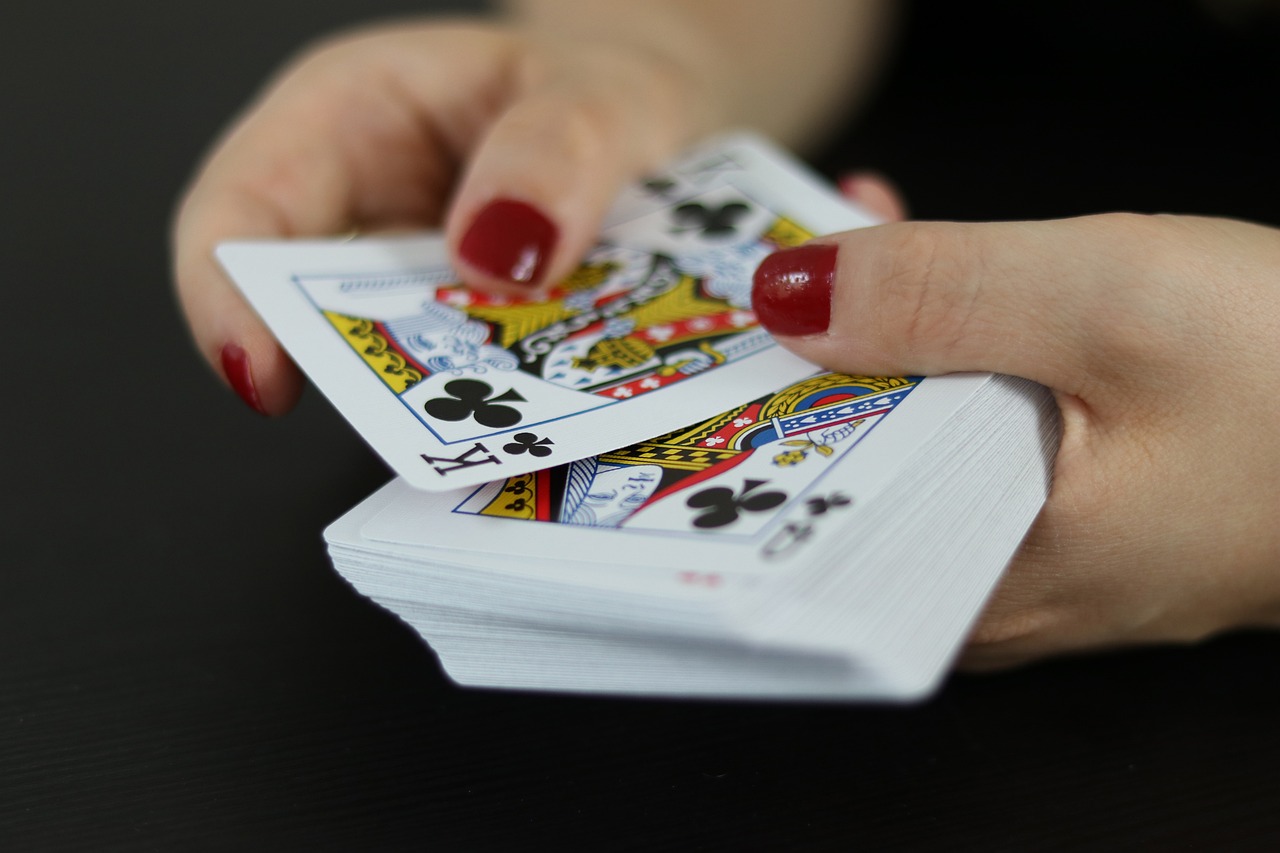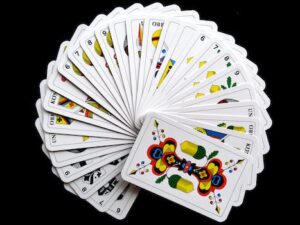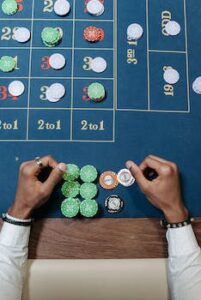“The Final Showdown: From Bets to Bluffs, Your Ultimate Guide to Winning at the Climactic Poker Moments” is a comprehensive guide that aims to equip poker players with the necessary strategies and techniques to excel in the crucial moments of a poker game. This guide delves into the art of making calculated bets, executing well-timed bluffs, and ultimately emerging victorious in the final showdown. Whether you are a beginner looking to improve your poker skills or an experienced player seeking to enhance your gameplay, this guide provides valuable insights and tips to help you succeed in the high-stakes world of poker.
Mastering the Art of Bluffing: Strategies to Fool Your Opponents in the Final Showdown
One of the most important aspects of bluffing is timing. Knowing when to bluff and when to fold is crucial. Bluffing too often can make you predictable and easy to read, while bluffing too little can make you appear weak. The key is to find the right balance and use your bluffs strategically.
One strategy to fool your opponents is to observe their playing style. Pay attention to how they bet, their body language, and any patterns they may have. This information can give you valuable insights into their hand strength and help you determine when it’s the right time to bluff. For example, if you notice that a player tends to fold easily when faced with a large bet, you can use this to your advantage by making a big bluff and forcing them to fold.
Another effective bluffing strategy is to consider the board cards. The community cards can greatly influence the strength of your hand and your opponents’ hands. If the board cards are favorable to your hand, it can be a good opportunity to bluff. For instance, if the board shows three low cards and you have a high card, you can bluff and make your opponents believe that you have a strong hand.
Furthermore, your table image plays a crucial role in bluffing. If you have been playing tight and conservative throughout the game, your opponents are more likely to believe that you have a strong hand when you make a big bet. On the other hand, if you have been playing aggressively and bluffing frequently, your opponents may be more inclined to call your bluff. It’s important to be aware of how your opponents perceive you and adjust your bluffing strategy accordingly.
In addition to these strategies, it’s important to stay calm and composed during the final showdown. Bluffing requires confidence and a poker face. Any signs of nervousness or hesitation can give away your bluff and make your opponents suspicious. Practice controlling your emotions and maintaining a neutral expression to keep your opponents guessing.
Lastly, it’s important to remember that bluffing is not a guaranteed winning strategy. It’s a risky move that can lead to big rewards or devastating losses. It’s crucial to assess the risks and rewards before deciding to bluff. Sometimes, it’s better to fold and wait for a better opportunity rather than risking your chips on a bluff that may not work.
In conclusion, mastering the art of bluffing is an essential skill for any poker player. It requires careful observation, strategic thinking, and a good understanding of your opponents. By timing your bluffs, observing your opponents’ playing style, considering the board cards, managing your table image, and staying composed, you can increase your chances of fooling your opponents and winning at the climactic poker moments. However, it’s important to remember that bluffing is not foolproof and should be used judiciously.
Analyzing Betting Patterns: How to Read Your Opponent’s Moves and Make the Right Bets
When it comes to analyzing betting patterns, there are a few key things to keep in mind. First and foremost, pay attention to the size of your opponent’s bets. A small bet may indicate a weak hand, while a large bet could signal strength. Of course, this is not always the case, as players can use deception to throw you off, but it’s a good starting point.
Another important factor to consider is the timing of your opponent’s bets. If they quickly place a bet after the flop, it could mean they have a strong hand. On the other hand, if they take their time before betting, it might indicate that they are unsure about their hand or trying to lure you into a trap. Again, this is not always a foolproof indicator, but it can give you some valuable information.
In addition to the size and timing of bets, the consistency of your opponent’s betting patterns is also crucial. If they consistently bet the same amount when they have a strong hand and a different amount when they have a weak hand, it becomes easier to read their moves. This consistency can be a telltale sign of their hand strength and can help you make better decisions.
Furthermore, observing your opponent’s body language and behavior can provide additional clues about their betting patterns. Are they fidgeting or showing signs of nervousness? This could indicate that they are bluffing or have a weak hand. On the other hand, if they appear calm and confident, it might mean they have a strong hand. These non-verbal cues can be subtle, but with practice, you can learn to pick up on them and use them to your advantage.
Of course, it’s important to remember that analyzing betting patterns is not an exact science. Players can use various strategies to deceive their opponents and throw them off track. They may intentionally vary their bet sizes or timing to confuse you. This is where your own judgment and experience come into play. It’s essential to consider all the available information and make an educated guess about your opponent’s hand.
In conclusion, analyzing betting patterns is a crucial skill in poker. By paying attention to the size, timing, and consistency of your opponent’s bets, as well as their body language and behavior, you can gain valuable insights into their hand strength. However, it’s important to remember that poker is a game of strategy and deception, and players can use various tactics to mislead you. So, while analyzing betting patterns can give you an edge, it’s not a foolproof method. Ultimately, it’s your judgment and experience that will guide you to make the right bets and come out on top in the final showdown.
The Psychology of Poker: Understanding Mind Games and Emotional Control in the Final Showdown
Poker is not just a game of cards; it is a game of people. Understanding the psychology of poker is crucial to gaining an edge over your opponents. One of the key aspects of this psychology is the ability to read your opponents’ body language and facial expressions. A slight twitch of the eye or a nervous fidget can reveal a lot about the strength of their hand. By paying close attention to these subtle cues, you can gain valuable insights into their strategy and adjust your own accordingly.
Another important aspect of the psychology of poker is the art of bluffing. Bluffing is a tactic used to deceive your opponents into thinking you have a stronger hand than you actually do. It is a high-risk, high-reward strategy that requires a great deal of skill and emotional control. Bluffing can be a powerful tool in the final showdown, as it can force your opponents to fold and give you the winning hand. However, it is important to use bluffing sparingly and strategically, as overusing it can lead to predictability and ultimately, failure.
Emotional control is another crucial element in the final showdown. The pressure and intensity of the moment can easily lead to impulsive decisions and irrational behavior. It is important to remain calm and composed, even when faced with a difficult decision or a bad hand. Emotional control allows you to think clearly and make rational decisions based on the information at hand. It also prevents you from giving away any tells or cues that could give your opponents an advantage.
To maintain emotional control, it is important to have a solid understanding of your own emotions and triggers. Recognizing when you are feeling anxious, frustrated, or overconfident can help you make better decisions and avoid costly mistakes. Taking deep breaths, practicing mindfulness, and staying focused on the present moment can also help you stay calm and composed in the final showdown.
In addition to understanding the psychology of poker and maintaining emotional control, it is important to have a solid strategy in place for the final showdown. This strategy should be based on a thorough analysis of the game, your opponents’ playing styles, and the current state of the table. It should also take into account the size of the pot, the strength of your hand, and the potential risks and rewards of each decision.
In conclusion, winning at the final showdown in poker requires more than just luck and a good hand. It requires a deep understanding of the psychology of poker, the ability to control one’s emotions, and a solid strategy. By mastering these elements, you can increase your chances of coming out on top in the climactic moments of the game. So, the next time you find yourself at the final showdown, remember to keep a poker face, trust your instincts, and play your cards right.
Calculating Pot Odds: Maximizing Your Chances of Winning Big in the Climactic Poker Moments
Pot odds refer to the ratio of the current size of the pot to the cost of a contemplated call. By calculating pot odds, players can determine whether the potential reward justifies the risk of making a particular bet or call. It’s a crucial skill that separates the amateurs from the professionals.
To calculate pot odds, you need to consider the size of the pot, the size of the bet you are facing, and the likelihood of making your desired hand. Let’s say you are playing Texas Hold’em, and the pot is currently $100. Your opponent bets $20, making the total pot $120. You are considering calling the bet with a flush draw, meaning you need one more card of the same suit to complete your hand. There are nine cards of that suit remaining in the deck. This means you have a 19% chance of hitting your flush on the next card.
To calculate the pot odds, divide the size of the bet you are facing by the total pot size. In this case, $20 divided by $120 gives you a pot odds ratio of 1:6. This means that for every $1 you invest, you stand to win $6 if you hit your flush. With a 19% chance of hitting your flush, the potential reward outweighs the risk, making this a favorable call.
Understanding pot odds allows you to make informed decisions based on the potential profitability of a hand. If the pot odds are greater than the odds of making your desired hand, it’s generally a good idea to call or even raise. On the other hand, if the pot odds are lower than the odds of making your hand, it’s usually best to fold.
However, pot odds alone should not be the sole factor in your decision-making process. It’s important to consider other variables, such as your opponents’ playing styles, your position at the table, and the overall dynamics of the game. These factors can greatly influence the profitability of a hand and should be taken into account when making your final decision.
In addition to calculating pot odds, it’s also essential to be aware of implied odds. Implied odds refer to the potential future bets you can win if you make your desired hand. For example, if you have a small pair and are hoping to hit a set on the flop, the pot odds may not justify a call. However, if you believe that your opponent has a strong hand and will continue betting, the potential future bets can greatly increase the profitability of your hand.
In conclusion, calculating pot odds is a crucial skill for any serious poker player. By understanding the relationship between the size of the pot, the size of the bet, and the likelihood of making your desired hand, you can make informed decisions that maximize your chances of winning big in the climactic poker moments. However, it’s important to remember that pot odds should not be the sole factor in your decision-making process. Consider other variables and always trust your instincts to make the best possible play.
Essential Tips for Navigating the Final Showdown: From Table Position to Hand Selection
The final showdown in a poker game is the climactic moment where all the chips are on the line. It’s the moment where players go all-in, make big bets, and try to outwit their opponents. To come out on top in these intense moments, it’s crucial to have a solid strategy and make the right decisions. In this article, we will provide you with essential tips for navigating the final showdown, from table position to hand selection.
One of the most important factors to consider in the final showdown is your table position. Your position at the table determines the order in which you act, and this can have a significant impact on your decision-making. If you are in an early position, you will have to act before most of your opponents, which means you have less information about their hands. In this case, it’s advisable to play more cautiously and only bet or raise with strong hands. On the other hand, if you are in a late position, you have the advantage of seeing how your opponents act before making your decision. This allows you to make more informed choices and potentially bluff your way to victory.
Another crucial aspect of the final showdown is hand selection. Not all hands are created equal, and it’s important to know which ones to play and which ones to fold. In general, you should be more selective with your hand choices as the game progresses and the stakes get higher. Premium hands like pocket aces or kings are obviously strong and should be played aggressively. However, even with weaker hands, you can still make strategic moves depending on your position and the actions of your opponents. For example, if you are in a late position and everyone before you has folded, you can consider bluffing with a weaker hand to steal the pot.
Bluffing is a powerful tool in the final showdown, but it should be used sparingly and with caution. Bluffing involves making your opponents believe that you have a stronger hand than you actually do. It can be an effective strategy to force your opponents to fold and win the pot without having to show your cards. However, bluffing requires careful observation of your opponents’ behavior and a good understanding of the game. It’s important to pick the right moments to bluff and to be prepared to back down if your opponents call your bluff.
In addition to table position, hand selection, and bluffing, it’s crucial to pay attention to your opponents’ betting patterns and body language. These can provide valuable insights into the strength of their hands and their overall strategy. If an opponent suddenly starts betting aggressively, it could be a sign that they have a strong hand. Conversely, if they seem hesitant or nervous, it might indicate a weaker hand. By observing these cues, you can adjust your own strategy accordingly and make more informed decisions.
In conclusion, the final showdown in a poker game is a high-stakes moment that requires careful strategy and decision-making. By considering factors such as table position, hand selection, bluffing, and observing your opponents’ behavior, you can increase your chances of coming out on top. Remember, poker is not just a game of luck, but also a game of skill and strategy. So, the next time you find yourself in the final showdown, use these essential tips to navigate your way to victory. “The Final Showdown: From Bets to Bluffs, Your Ultimate Guide to Winning at the Climactic Poker Moments” provides valuable insights and strategies for players looking to excel in high-stakes poker games. The article covers various aspects of the game, including betting techniques, bluffing tactics, and psychological warfare. By following the advice and tips presented in this guide, players can enhance their skills and increase their chances of success during the crucial moments of a poker game. Whether you are a beginner or an experienced player, this book can serve as a valuable resource to improve your poker game and achieve victory in the final showdown.




